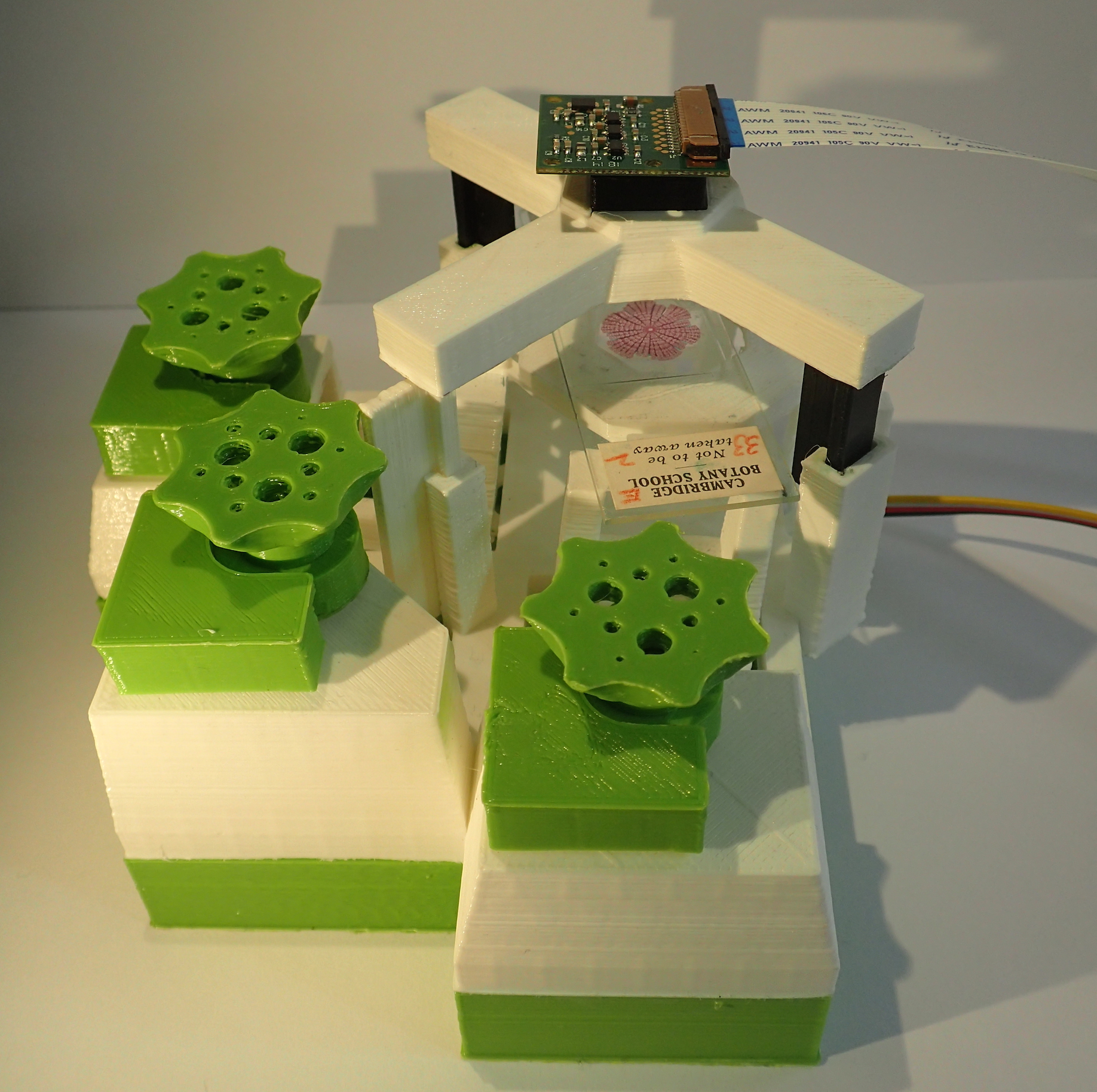The chassis is 3D printed, allowing simple modification. The plastic is cheap, biodegradable and flexible. Stage translation, based on work by Dr Richard Bowman [1], makes use of the flexibility to give fine control.
The mechanics of the stage can be automated using stepper motors. The user has remote control of the microscope, and can introduce tailor-made programs to facilitate their experiments.
The optics are low-cost, low-energy and modular. Illumination using LEDs means reducing power consumption and cost. A Raspberry Pi camera makes the microscope digital, and an epi-fluorescence cube makes imaging GFP a reality. With sub-micrometer resolution in brightfield and darkfield modes, you are ready to image single cells or whole tissues.
The software uses OpenCV and forms a core part of the project. The Webshell gives you real-time control over the microscope live-stream: from time-lapse to scale-bars. MicroMaps uses image stitching and sample recognition algorithms to give you the whole sample field in one, ready for annotation and screening. Autofocus capabilities allow automation of OpenScope’s motors, letting you image dynamic samples without supervision.
The documentation is comprehensive, non-proprietary and easy to access. And its licensed to make sure it stays that way.
The community of ‘makers’ is free to develop, modify and redistribute the documentation. OpenScope can evolve, improve and adapt to different needs.
The overall cost is below £200, orders of magnitude below commercial lab microscopes.
[1] Sharkey, J., Foo, D., Kabla, A., Baumberg, J. and Bowman, R. (2015). A one-piece 3D printed microscope and flexure translation stage.[online] Arxiv.org. [Accessed 18 Sep. 2015].










